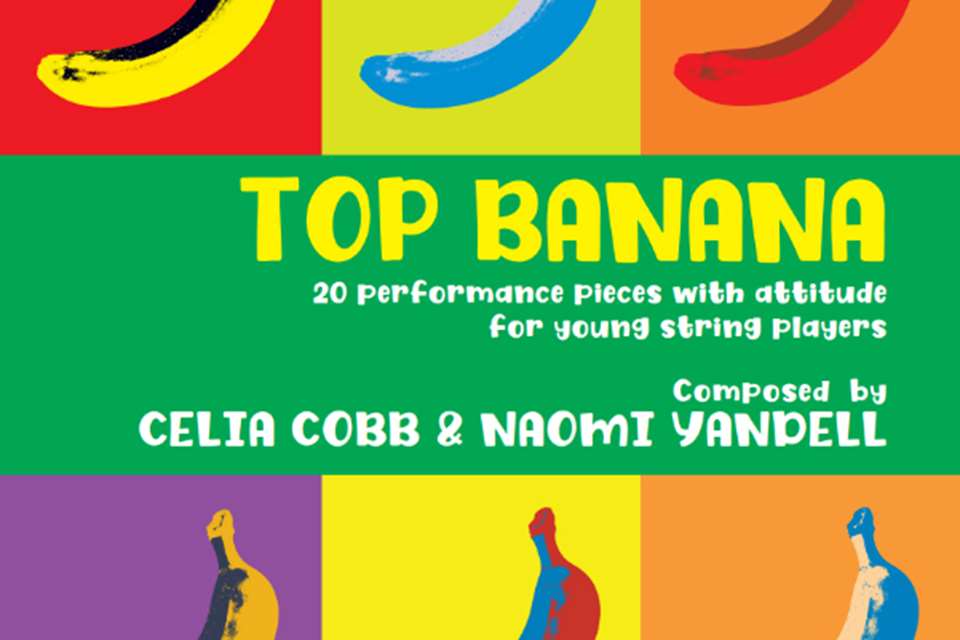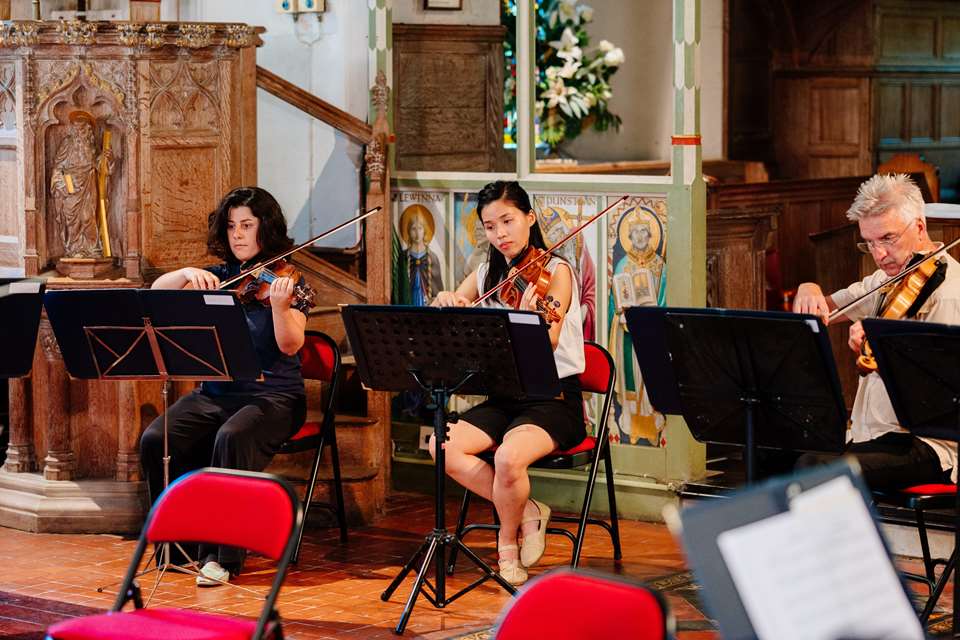String sheet music reviews: Cool Beans
Nina-Marie Plapp
Wednesday, July 19, 2023
Cool Beans is 'a compendium full of musical humour' according to reviewer Nina-Marie Plapp.

Cool Beans is a book of original character duets written for pupil and teacher, recently published by Stainer & Bell. Available for violin, viola and cello, it is suitable for students from Grades 1 to 3.
It is the second beginner string book written by Celia Cobb and Naomi Yandell, following Top Banana. The co-writers are seasoned educators and publishers and run their own string school in Cambridge: Stringmoves.
‘Go out and buy it!’ I wholeheartedly cry out to all string teachers. ‘Play more engaging duets with your students!’ I yell, standing on my piano stool. Duets are the super food of musical nutrition with innumerable benefits for young students. Good duets can nourish the bond between student and teacher and spark a newfound interest in playing. They allow a teacher to demonstrate and correct in a gentle, non-verbal, way without stopping the music mid flow.
Playing duets with my teacher is one of my fondest early musical memories. Cool Beans is full of the kind of funny and dramatic dialogue that promotes positive engagement in lessons. It contains 21 pieces printed in large intelligible notation.
The main book has the duets written in full score. A pupil's book is included, with their solo part written out separately. Duets are invaluable first lessons in ensemble playing, so you are missing a trick at this early stage if you are not giving the pupil access to a full score when practising. When possible, I would use the main book for students.
Although teachers are meant to play the accompaniment, the bottom part could also be played by students of Grade 5 level and upwards. This could be useful for mixed-ability classes or student performances.
The compositions are written in a conversational style with a fresh modern sound. Students will be kept on their toes with the asymmetrical call and response lines. A broad range of moods and exaggerated styles throughout means that students are bound to find a favourite tune, be it a tango, march, shanty or the Bark Double! This is a compendium full of musical humour, and the silly ending in Welly Boot Hoedown will garner giggles from student and teacher alike.
There is a strong focus on rhythm and articulation and the compositions facilitate many opportunities to demonstrate rhythmic integrity – Matchday March introduces triplets, Mind the Gap irregular time-signatures, and Tango Waltz syncopation. The parts are shadowed and simple enough to help a student see where they are rushing, slowing down or simply getting it wrong.
Tune titles are simple yet imaginative and use syllabic rhythms to demonstrate the main rhythm, such as Watch Out (for the REALLY SCARY MONSTER) and Shut That Door!
As you might expect, the technical standard increases as you progress through the book, but the level of dificulty is gradual enough to follow a good student's progress. An even spread of accompaniment and melody lines gives students an opportunity to practise both skills. Bowing marks are rare in the first half of the book, leaving students room to focus on intonation and accuracy in first position.
While the book isn't loaded with big juicy melodies that would be useful for tone production and vibrato, there are a few choice numbers. My particular favourites when playing through the book were Lament, a beautiful folky melody, and Museum Piece, a mysterious harmonic delight. Shiver Me Timbers is given the performance mark ‘Swashbuckling’, and performance markings throughout the book are in English and equally as inspired; for example, the markings in Marble Run are ‘on track’, ‘zesty’ and ‘menacing’.
At the back of the book there are performance notes, which are extremely good. The authors clearly know what they are doing; they give great advice on how to practise, highlight performance details a student might otherwise miss, and give harmonic analysis, which is not always taught in classes. The notes include details that will enhance a student's overall musicianship and help with independent learning.
Overall, Cool Beans is great for rhythmical advancement and introducing time-signatures, harmonics and left-hand pizzicato at an early stage. It provides valuable sight-reading practice for more advanced students and keeps things interesting for older students who are less technically advanced. Duets go a long way to reinforce music as a social activity, a shared experience, stimulating for both student and teacher. The composers are experts in early learning and have created a fun collection new students will find rewarding from the get go.





